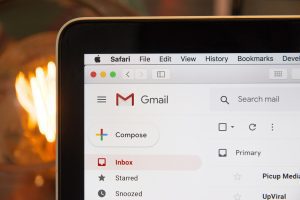Email is an absolute workhorse for marketers.
The email ROI is an impressive $36 for every $1 spent. So, yes, it does make money. That’s higher than you can expect from other forms of marketing. These include paid search, direct mail, and social media.
However, all marketers contend with one issue: falling into the dreaded spam folder. So, if you’re using a legitimate platform to send your campaign (like Ascend by Wix site), it would be a goner even if you’re using a fair platform to send your campaign.
But fret not because there are still practices you can do to increase your inbox placement rate.
Below, we’ll examine what Wix email marketing is, why your Wix emails are going to spam, and how to fix it.
What is Wix Email Marketing?
![]()
Wix isn’t just a website builder; it also comes with an email marketing service. You get access to its email marketing service if you use the Wix website, allowing you to engage with your audience and create an effective email campaign.
Its premium plans even offer a reliable solution to advanced marketing and SEO tools, including Google Analytics integration.
Its email marketing tool is called Ascend. You can do email campaigns that are easy to track and manage through such a tool. Moreover, the email marketing platform allows you to edit emails, write additional text, analyze data, and automate campaigns.
It also has a library of fonts, so users can easily add text to the templates and make them more personalized.
The Wix team believes you can’t run a successful email marketing campaign if your email doesn’t look professional. Thus, they offer designer-made email templates so you can find the right option for you.
Unfortunately, just because you’re using a good email marketing tool doesn’t mean you won’t struggle with low open rates for your email campaigns.
Here are the common reasons why your Wix emails are going to spam and what your team can do to get back to your subscribers’ inboxes:
14 Common Reasons Your Wix Emails Are Landing the Spam Folder (and What To Do About It)
1. Spam Filter Triggers
Mailbox providers, such as Gmail, Outlook, and Yahoo Mail, use inbound and outbound emails to prevent spam. However, most email senders are only concerned with the inbound filters.
Inbound spam filtering is the process where incoming emails are filtered and scanned before delivery to users. Meanwhile, outbound spam filtering involves scanning emails while they exit the network.
If your Wix emails are landing in spam, you may be using words that trigger these spam filters. Email providers will flag these phrases as malicious and fraudulent. As a result, they route these emails away from the recipients’ inboxes when it happens.
These spammy words or phrases typically overpromise a positive outcome in getting sensitive information from the receivers. So, one of the best ways to avoid triggering spam filters is to choose the words you use in your subject lines carefully.
Also Read: 3 Key Elements of Irresistible Email Subject Lines
2. No Permission to Contact Recipients
One of the essential rules in email marketing is always to ask for permission before sending an email. So, you should never obtain a list of emails through unscrupulous means.
Not only is it unethical, but it can potentially land your emails in the spam folders. So, send your email campaigns only to people who willingly opted in. It’s that simple.
Explicitly asking the permission of your potential email recipients will ensure that your emails are successfully delivered and will also protect your sending reputation. To do this, you can simply include a check box or a button to let them know that they should expect an email from you soon.
3. Switching Email Service Providers
Every switch of email service providers can also affect your sender’s reputation score. Suppose you do make a switch for important business reasons. In that case, you need to warm up the domain’s new sender reputation, so your recipients or spam filters won’t consider you a spammer.
At InboxAlly, we don’t suggest moving to a new email service provider for repairing a damaged sender reputation or domain. Try out our ultimate deliverability tool, and you’ll see the difference.
4. Inappropriate Schedule For Email Sending
Email frequency is the line between converting and unsubscribing timely, spammy, helpful, and annoying emails.
The inappropriate email-sending schedule is another reason your Wix emails may be flagged as spam. Therefore, only conveniently send your campaigns to your audience to fix this issue. Remember that 78% of global consumers unsubscribe because brands sent them “too many emails.”
So, as much as possible, know your audience’s taste. Make it happen if your audience prefers to receive an email from you once a month or weekly.
In addition, avoid a sudden increase in the emails you send. If you suddenly start sending emails to 200,000 subscribers when you usually send only to 10,000, it can trigger the spam filters.
5. No Physical Address
According to the US Federal Trade Commission (FTC), you must include a valid, physical postal address in your emails. It hopes marketers and companies to be traceable and transparent.
Even if you avoid a fine or omission, it will hurt your delivery rate. In this case, you can simply add the post office box you’ve registered with the Postal Service, a private mailbox registered with the commercial mail receiving agency, or your street address.
6. Image-Heavy Emails
Your email messages don’t have to be image-heavy. Instead, it’s just a matter of aesthetics.
To avoid this problem, follow the 60/40 rule for text-to-image ratio. Simply put, at least 60% of your email should contain text, and images should not take up more than 40% of the content.
7. Inaccurate Sender Information
“Reply-To,” “From,” “Your,” and the routing information must be accurate. It should also identify the business or the person who initiated the message and include the originating email address and domain name.
In short, you must clearly state who your company is or who you are as a sender. So, don’t use inaccurate sender information that may mislead someone. Otherwise, you may end up in spam emails.
The CAN-SPAM Act may not require businesses to use the same generic name for their emails. Still, there’s plenty of room to experiment with different names to add a more personal touch. Eventually, it will improve your deliverability and email performance.
For instance, you can switch to using the name of your business, your name, the name of the newsletter, or a name that accurately represents that it comes from you. Split-test using different sender names also helps fine-tune your email marketing approach.
8. Long Emails
Another reason they identify legitimate newsletters as spam emails is because the content is too long.
It may be easier to write, yet it’s difficult to calibrate. This is especially true if you want your recipients to act once they’ve read the content. Long emails also tell your readers that you have a lot of time on your hands and you’re unorganized.
Meanwhile, a short email communicates organization, efficiency, and the value of your and your readers’ time. So, the next time you craft your email in your Wix email account, consider writing it as short as possible.
Some rules for short yet effective emails include figuring out your main point, asking one thing or two, and linking to a web page if necessary.
9. No Unsubscribe Option
To avoid spam complaints, you should have an opt-out or unsubscribe link. Additionally, how you put that link should be easy to access and visible.
Although it’s painful to see people unsubscribe from your contact list, placing this link is beneficial in the long run. It will also protect your email deliverability and remove the list of recipients who are not interested in your content.
However, it’s worth mentioning that not all opt-outs are created equal. Some people may want to unsubscribe from the number of emails they receive but not the newsletter altogether. Therefore, it’s worth updating your unsubscribe option to allow users to manage their preferences.
10. Poor Email Engagement
If most recipients don’t open your email, ESPs have a solid reason to believe your emails are not adding value. This reason is also why your Wix emails land in the spam folder.
Sending messages with poor engagement wastes time crafting that email, resulting in your poor domain reputation. What we recommend here at InboxAlly is to prune your email list first.
Make sure you have a good list at all times or measure user engagement for a certain period. The average email open rate for different industries is 21.33%, which tells you your campaign is working.
11. Failing Email Authentication
The next factor that tips off spam filters and may cause your emails to land in the spam is your email account isn’t properly authenticated.
When an ESP’s spam filter detects an email that lacks authentication, it automatically raises red flags. To solve this, establish email authentication standards to prevent phishers and spammers from using your domain without permission.
The three main methods of email authentication are SPF (Sender Policy Framework), DKIM (DomainKeys Identified Mail), and DMARC (Domain-based Message Authentication, Reporting, and Conformance).
Our SPF, DKIM, and DMARC guide can give you more information about how these email security protocols work to secure your email.
12. High Complaint and Bounce Rates
The benchmark for email bounces is less than 2%. So, if your campaign metric shows above a 2% bounce rate, it’s already worth your attention. It may also mean that your email list is low quality or outdated.
This is particularly concerning when dealing with persistent deliverability issues like Yahoo emails bouncing back, which often signal problems with authentication, email list hygiene, or sending reputation that need immediate resolution.
Email clients like Outlook, Gmail, and Yahoo treat such senders poorly, which hurts your sender’s reputation. The same email clients allow their users to report emails as spam. And when users do, the content will be filtered out, mainly if they reported too many emails.
Meanwhile, the acceptable standard complaint rate is less than 0.1%, which means one complaint for every thousand emails sent. Most email marketing platforms display the number based on the senders within the same domain.
13. Sloppy HTML
Sloppy HTML in email marketing can get your campaign dumped into the junk folder. Only one wrong color format or incorrectly shortened link and your email will appear wretched. How much more if the recipient opened that email via a smartphone and not a web email client?
There are two possible reasons your recipients see your email outside the way you planned: First, it is associated with the technical characteristics of the user’s device. Second, it’s the rendering engine.
To prevent issues related to the technical characteristics of the recipient’s device, use a responsive email design or create an HTML email in the form of a table with cells. Here’s an example:
<table>
<tr>
<td>…</td>
</tr>
</table>
Adding a plain text version to your email also helps. After all, some people are put off by a colorful layout in email. Another solution is to keep the programming languages you use to code emails to CSS and HTML.
14. Form Abuse
Spammers also attack an unprotected web form. Even the simple sign-up form you use on your site to collect client information is now at risk of being abused and sent as spam.
To keep your forms safe, use a CAPTCHA solution. Don’t think your customers will get annoyed selecting all the pictures because security measures are now commonplace and an industry standard. Additionally, the use of honeypot fields can also to your forms’ protection.
A honeypot field is a field in your form that is not visible to legitimate users. Anytime a form is submitted with a value in that field, you’ll know it’s most likely spam.
Improve the Deliverability of Your Email Marketing Campaigns Today
Although there are many reasons why your Wix emails land in spam, the list above is the most common; fortunately, they’re preventable.
By understanding the logic behind spam filters, following the best email marketing practices, and familiarizing yourself with the CAN-SPAM Act, you can eliminate your spamminess and eventually land in the inbox.
Are you looking for the best email marketing solution for small and large businesses? Try InboxAlly.
It’s the ultimate email deliverability tool that teaches inbox providers not to send your emails to spam in the first place. You can even go for a 10-day free trial, no credit card needed.


